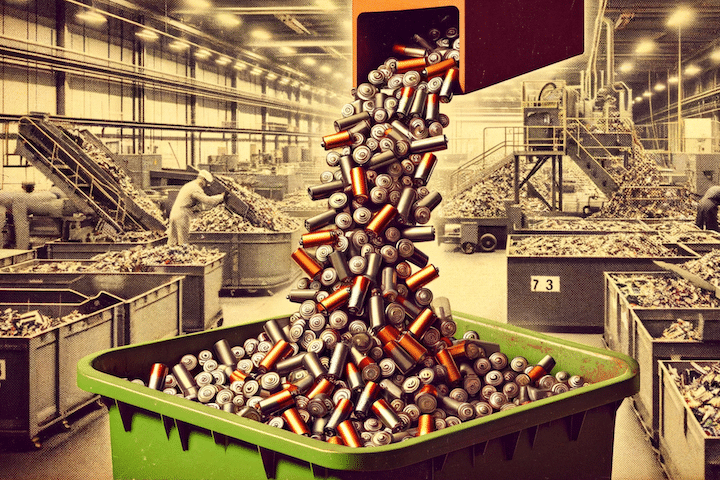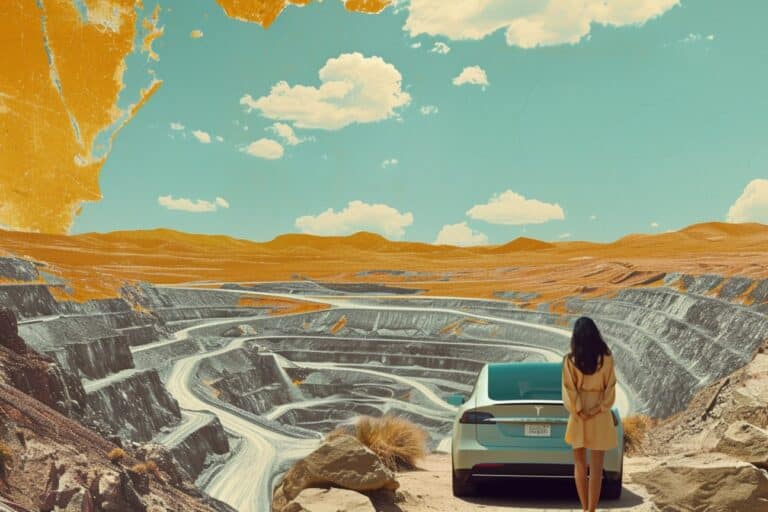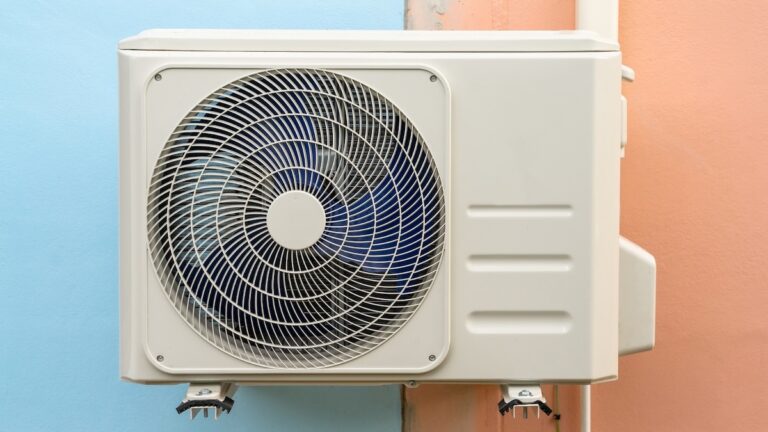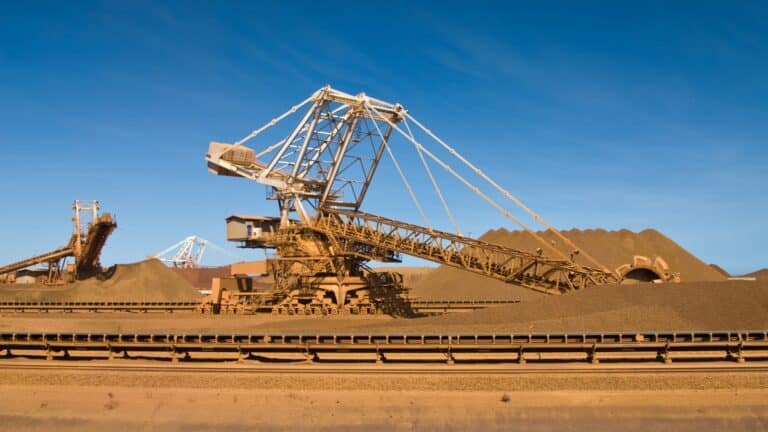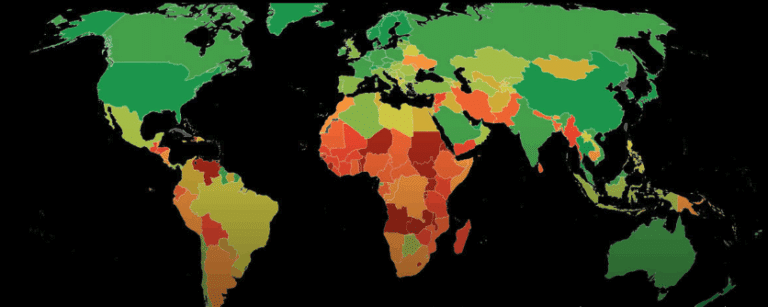Erin Douglas: [00:00:01] I watched it on TV and sort of thought, Wow, that’s interesting. I think I remember saying to the TV, that is literally not true because it was not. [00:00:11][9.8]
Melissa Lott: [00:00:12] This is Erin Douglas. And on February 17th, 2021, Texas was three days into a winter storm that knocked out power to nearly 5 million people. It shut down the state and it caused historic disruptions to the energy system. [00:00:24][12.5]
Erin Douglas: [00:00:25] Every night I was sort of tuning and watching on TV to see how Texas was being shown on the national stage. And I do remember seeing of it saying that wind was to blame. [00:00:37][12.1]
Newsreel: [00:00:37] Not against wind turbines. But my question is, if they have these rolling blackouts and you got freezing weather, I mean, and they’re not reliable and it’s use it or lose it, what good is it? So on this shows how the Green New Deal would be a deadly deal for the United States of America. [00:00:53][15.4]
Erin Douglas: [00:00:53] And that this is why the Green New Deal would be a disaster for Texas and all this stuff. [00:00:57][3.8]
Newsreel: [00:00:58] And that is our wind in our solar. They got shut down and they were collectively more than 10% of our power grid. And that thrust Texas into a situation where it was lacking power in a statewide basis. As a result, it just shows that fossil fuel is necessary. [00:01:15][16.9]
Melissa Lott: [00:01:16] But Aaron wasn’t just a casual viewer. She’s a journalist at the Texas Tribune. She covers energy and the environment. And she was in the middle of reporting a story about the topic that Governor Abbott was talking about on TV. [00:01:26][10.1]
Erin Douglas: [00:01:27] Yeah, So what we were seeing in the public sphere from politicians, from the oil and gas industry was a lot of blame on wind power and wind turbines and a lot of misinformation. We felt that that was false. Anyone who watches the energy grid or is familiar with the makeup of the Texas energy grid knows that it has become extremely reliant on natural gas, especially during the winter. [00:02:00][33.5]
Melissa Lott: [00:02:01] Aaron wanted to get to the bottom of things and figure out exactly how much electricity was being met by natural gas, coal and nuclear power plants in the lead up to the grid failure. She also wanted to know how much was being supplied by wind turbines, the resource that was suddenly being condemned. So she dug into the data and she found a completely different reality than the one that was being shown on television. According to the data, wind provides about a quarter of Texas electricity over the course of a year. But during the winter, less than 10% of the state’s electricity supply was coming from wind due to expected seasonal fluctuations. In other words, the Texas grid operator ERCOT, was then expecting the wind to produce much energy during the winter storm. [00:02:41][39.9]
Erin Douglas: [00:02:41] And so that means that 90% was supposed to come from other sources. And I talked to ERCOT officials who told me, you know, at least 80% was supposed to come from natural gas. And so if you want to talk about the reasons, the primary source of power that went down, that caused so much power to become unavailable, that we had to implement these outages. It is so clear that it is from natural gas power plants being unable to generate power. [00:03:12][30.3]
Melissa Lott: [00:03:13] But the false narrative caught on. People were angry and scared and they were looking for something to blame. And renewables, mostly wind. They became easy targets. So in the days after the outages, social media and cable news were filled with speculation about renewable energy bringing down the Texas grid. [00:03:28][15.8]
Erin Douglas: [00:03:29] This was just, you know, something that caught fire because people are looking for any sort of explanation as to why they’re sitting in the dark for days on end. [00:03:37][8.0]
Melissa Lott: [00:03:39] This incident isn’t just a simple, one off mistake. The clean energy transition is messy. It’s confusing, it’s political. And when something bad happens, it’s easy to fall back on narratives that blame the newcomers. [00:03:50][11.4]
Erin Douglas: [00:03:51] Yeah, I mean, it shows to me that the energy transition is happening and that the players that are in power are worried about it and unsure how they’re going to navigate it. [00:04:04][12.9]
Melissa Lott: [00:04:04] So let’s strip away that fear and fingerpointing and take a deep look at how the power plant mix is changing and what it means for the way we run the grid. This is the big switch. It’s a show about how and why we’re cleaning up our energy systems as we transition to a net zero future. [00:04:20][15.9]
Melissa Lott: [00:04:26] To slow climate change. We need to transform our buildings and our homes and our cars and the economy to reduce greenhouse gas emissions as quickly as possible. But how do we do it right? I’m Dr. Melissa Lott, and I’m the director of research at Columbia University’s Center on Global Energy Policy. I study the technologies and systems that keep our electric grid running. This is the second installment in our series on a zero carbon grid. In this episode, how do we build a low cost, reliable and resilient mix of clean generation? So energy people talk a lot about generation. They don’t mean a generation, as in I’m a millennial or I am, you know, baby boomer. They mean something else. So what is generation? [00:05:10][43.9]
Dr. Joshua Rhodes: [00:05:11] The easiest way to think about it is, is the power plants that make the electricity that then flows over those wires that then comes into our homes, that allows us to power the things that we want, whether this computer that I’m looking at or the lights that are, you know, allow me to see in this room. And so we’re talking about generation. We’re talking about the machines that make the electricity that we consume. [00:05:30][18.8]
Melissa Lott: [00:05:30] This is Dr. Joshua Rhodes and he’s a research associate at the University of Texas at Austin. [00:05:35][4.3]
Dr. Joshua Rhodes: [00:05:35] I was part of the crew in Texas that, you know, lost power for four days. It’s pretty rough. [00:05:39][3.9]
Melissa Lott: [00:05:40] And like me, he studies the grid system and how it’s changing. Joshua writes publications with titles like evaluating rotational inertia as a component of grid reliability, with high penetrations of variable renewable energy, and how solar and storage can reduce coincident peak loads and payments. We’re going to tap him for a far less technical purpose. In our last episode, we asked the question What is the grid and why does it matter? And in this episode, we’re focusing on one critical part of the grid power plants, also known as supply or the generation mix. And so how do we generate electricity today? What our generators look like? [00:06:16][36.2]
Dr. Joshua Rhodes: [00:06:17] So a lot of our generators are big power plants that burn fossil fuels. We burn a lot of coal, we burn a lot of natural gas to make electricity. We also have a lot of nuclear power plants that that heat up water using radioactive material. And we also have a lot of, you know, solar and wind. So we capture the sunlight and we capture the wind as it blows. We typically convert that into electricity and, you know, incent it along the way. There are other things that we that we use as well. But those are kind of our our main fuels. And the the main way we do it is we use these input fuels to create heat that boils water. They create steam, and then that steam is under high pressure and then we send it through a turbine. And this turbine, you know, takes that steam and it converts it into rotational energy or it spins this turbine and generates electricity, kind of like the alternator in your car. It’s taking, you know, the spinning parts from your for your engine and converting it into to electricity for the battery in that case. But in this case, you know, it’s it’s creating massive amounts of electricity that then we you know, put on the system. [00:07:22][65.3]
Melissa Lott: [00:07:23] So what is all this spinning and boiling and converting amount to? Well, today America still gets about 60% of its electricity from fossil fuels. This is mostly by burning natural gas. We used to get most of our electricity from coal, but inexpensive gas and also really cheap wind and solar have pushed coal out of the mix. Coal power plants have shut down at record rates because they can’t compete economically and they’re still closing fast. Meanwhile, renewable energy, this is mostly wind and solar and hydropower. Well, they generate 20% of our electricity and that number is growing every year as more wind and solar are coming online and nuclear plants make up another 20%. Joshua thinks about the flow of electricity from these power plants and just stick with me. He thinks about them in terms of plumbing. [00:08:08][44.8]
Dr. Joshua Rhodes: [00:08:09] Yeah, I mean, you can kind of think of the grid as somewhat like a bathtub with a bunch of different spigots of different kinds of water flowing into it. Think of that water being electricity. So some of that is coming from coal. Some of it’s come from natural gas. You know, some are coming from the sun, some is from the wind. But it all kind of mixes together. And then you’ve got a bunch of little you got a bunch of pipes coming out of it, going to our individual homes and things like that. And so it’s all mixed together. You can’t tell, you know, the difference. What fuels we use to generate that electricity does matter from from a climate point of view because some produce more carbon dioxide than than others do. [00:08:41][32.1]
Melissa Lott: [00:08:41] So that is the generation mix in a nutshell or I guess a bathtub, as it were. Electricity is generated and it flows into the bathtub or pools together, and then it’s sent out as indistinguishable electrons to customers. But like Joshua said before, the electrons make it onto the grid, you can actually distinguish between them and where they come from. The different types of generation have different strengths and different attributes. And so how do these different types of power plants actually play together on the grid? Well, to understand that we’re going to move away from bathtubs and step into a different analogy an all star sports team play sports. Growing up, I don’t know if we’ve ever yeah. [00:09:20][38.5]
Dr. Joshua Rhodes: [00:09:21] I ran track and played football in high school. [00:09:23][2.3]
Melissa Lott: [00:09:24] You can tell we grew up at different places because I was a swimmer and a water polo player when I was in high school. Play a little bit of soccer when they needed someone who was not very skilled but willing to play. Building a net zero generation max is a lot like building a sports team, or more accurately, here in the U.S. it’s actually like rebuilding a sports team. So first you have to retire the underperformers and then you need to grow your star players. Sometimes you can do this with your current roster and sometimes you have to go out and recruit new players. Finally, you have to get your star players to work together with your supporting players. Even though I grew up playing water polo. We’re going to use the most popular sport in the world, and that’s soccer. To describe this. [00:10:05][41.7]
Sportscaster: [00:10:06] Game is to stop, stop, stop, stop, stop, stop. From. [00:10:13][6.6]
Melissa Lott: [00:10:21] So let’s start with renewables, namely wind and solar. [00:10:23][2.5]
Dr. Joshua Rhodes: [00:10:24] I want to get as much energy as I possibly can from those because they are. They are cheap. [00:10:29][5.0]
Melissa Lott: [00:10:29] Renewables are exceptionally cheap. And when you have the opportunity to use them, they’re really valuable. They’re going to be our forwards. [00:10:36][6.2]
Newsreel: [00:10:36] He doesn’t look up Torvalds, but he fires it. [00:10:41][4.5]
Dr. Joshua Rhodes: [00:10:41] Hope that the wind in the solar. They’re kind of out front. They’re big, they’re flashy. In a zero carbon future, they’re going to be the ones we’re going to want to have the ball most of the time, because they’re the ones that are that are charging the other side. [00:10:54][12.5]
Melissa Lott: [00:10:54] Their weakness, of course, is that they get tired faster and when wind shift or the sun goes down, while the strikers are no longer able to dominate the game and this is where the midfielders come in guided through. [00:11:04][10.3]
Sportscaster: [00:11:07] She’s wrapped up the trick in Fantastic. [00:11:08][1.6]
Melissa Lott: [00:11:11] Energy storage. Things like batteries. Think about the battery in your phone, but the size of a shipping container. These are technologies that can soak up excess energy from wind and solar or any generation source and release it at times when we really need the extra energy. Energy storage includes a lot of other technologies. So up and coming things like hydrogen and new battery chemistries, things that can store days worth of energy. [00:11:34][22.4]
Dr. Joshua Rhodes: [00:11:34] I think there’s two different types of storage. One we have right now, we’ve got we’ve got storage that’s good for fast response mass, got what we call high power density. You can put a lot of power onto the grid. It has low energy density, meaning it doesn’t last that long. So it’s like it can go quick, it can go hard, but then it has to go home, but and get recharged, literally recharged. But, you know, there’s also this concept of of long duration energy storage. And so this is energy storage that, you know, it’s not just moving, you know, solar from the middle of the day to the night and over and over again. But it’s moving, say, a windy spring to a you know, a less windy summer or something like that. So it acts more, I think, as it’s closer to that firm dispatchable generation that you were talking about. So I think I think maybe there’s a continuum there. [00:12:18][44.1]
Melissa Lott: [00:12:19] And finally, our defense. [00:12:20][1.0]
Newsreel: [00:12:23] Great defense by Boston. What an outstanding defensive play from Libby, because Dailey was off on the run. [00:12:27][3.9]
Melissa Lott: [00:12:28] This is what we call firm generation. Today, our defenders include coal and gas, hydro, geothermal and nuclear power plants. These players are considered firm or dispatchable because they can provide power whenever we need it, whenever we need just a little bit of help or backup. And they can support wind and solar and storage when they just aren’t performing at their best. [00:12:47][18.3]
Dr. Joshua Rhodes: [00:12:48] They’re very important because they’re stopping the other team from charging, but they’re their firm. They’re going to be there when we call on them, when the when our strikers are when our renewables are not. [00:12:56][8.8]
Melissa Lott: [00:12:57] The big challenge for some of these defenders, including the dominant ones like coal and natural gas, is that they’re heavy polluters. Not only do they produce greenhouse gas emissions, they also produce other types of air pollution that make us really sick. So they lead to childhood asthma and heart and lung disease. So that means we need to find ways to ramp up other technologies like geothermal and hydropower. And if natural gas and coal want to stay in the game, they have to clean up their act. They can do this by capturing emissions right at the smokestacks, for example, with a technology called carbon capture. But this technology is expensive and it’s imperfect, and we actually haven’t totally figured out how to use it. And finally, we have our goalkeeper say. [00:13:35][37.6]
Sportscaster: [00:13:35] Oh, it’s a brilliant save from ammonia, a double save the initial penalty for not that was safe. [00:13:40][5.0]
Melissa Lott: [00:13:41] When all else fails, you rely on the goalie. This is your director capture. It’s an expensive technology that actually can grab heat trapping gases straight from the air. Director Capture. By the way, it sounds pretty similar to carbon capture, which grabs carbon at the smokestack, but director capture will actually pull greenhouse gases directly from the air anywhere in the world. Both of these technologies will store the carbon they grab and both technologies. That’s director capture and carbon capture it smokestacks. They don’t actually provide any power to the grid, but they’re critical in reducing greenhouse gas emissions. They are the net in net zero. [00:14:15][34.3]
Dr. Joshua Rhodes: [00:14:18] And then if we’re going to get to a net zero world, then we’re going to have to have that goal that is, you know, direct air capture. The thing with like playing soccer is that you don’t want your goalie interacting with the ball very much at all, like you want them to touch the ball the least amount of time, because that means that the other team is advanced all the way down to your down to your goal. And they’re, you know, they’re getting shots on goal and, you know, eventually shots on goal come in, be humiliated. [00:14:43][24.8]
Newsreel: [00:14:44] Humbled and taken apart. And their supporters simply cannot believe what they have seen. [00:14:50][5.7]
Melissa Lott: [00:14:52] So to recap in our Net zero team in the future, here’s the ideal roster. I know it’s not a perfect metaphor, but it’s really helpful to think about. So first we have our strikers, things like wind and solar. They’re really cheap and they’re zero carbon and when they can get the ball, we want them to run with it, but they’re intermittent. They need breaks when the wind slows or the sun fades. And so we also need our midfielders. Things like energy storage, energy storage can soak up excess energy and send it back to the grid when we need it most. And it gives our wind and solar strikers a break when they need it. When renewables and storage both fall short. Then we have our firm dispatchable defenders to back them up. So things like nuclear and geothermal and hydro as well as coal and natural gas with carbon capture on their smokestacks. They’re an important part of the team and they pick up the slack when the rest of our team doesn’t have the ball. And when all else fails, we have our goalie. There are last resort. This is Director Capture, which soaks up carbon emissions from the polluters on the team. Sounds like a solid team. Right? But what happens if you lose a player? [00:15:53][60.8]
Newsreel: [00:15:57] A half million people are still without power and heat as electricity companies fail to deal with rare subzero temperatures. [00:16:05][7.9]
Dr. Joshua Rhodes: [00:16:06] You know, if you lose one, your team’s not going to perform as well. If we lose some of that, some of those variable renewables that are cheap, you know, we’re going to spend more money than we possibly want to. But if we lose some of that firm, dispatchable generation, we could get into the case where we don’t have enough supply to meet demand. If the you know, if the solar and wind or the variable renewables aren’t aren’t there. And that can get us into a into a pinch pretty quickly to. [00:16:27][20.5]
Melissa Lott: [00:16:27] A pinch like the one felt in Texas during the winter storm of February 2021. The outages in Texas, well, they were like a big game for the home team. They didn’t just lose one player, they lost half the roster. And after the game, the players were blaming the refs and the coach was blaming the players and everyone was just blaming each other. [00:16:45][17.9]
Dr. Joshua Rhodes: [00:16:46] The truth is, is, you know, while everyone had a hot take to share, I mean, when the data come in, every generation source was not performing at its expected output. [00:16:56][10.6]
Melissa Lott: [00:16:57] So as we heard earlier, when was initially blamed. And while it definitely wasn’t the main source of the problem, the lack of wind showed us something. It showed us how our team would either function or fall apart when it was put under stress. [00:17:09][12.2]
Dr. Joshua Rhodes: [00:17:10] The grid operator, it’s called ERCOT, its Electric Reliability Council of Texas. They’re the ones who manage the flow of electricity from the power plants to the homes. And all of this when they did their their study about the winter. They look at all the generation sources and they assess how much of this is going to be available or how much do we believe is going to be available to meet our, you know, winter, you know, peaking demand. They do this for summer, They do for spring. That it for the fall they do for every season. Typically during winter peaking events, the wind doesn’t blow as hard as it does during other times. So we’re not going to count on all 30,000 megawatts of those wind to be available. [00:17:45][34.5]
Melissa Lott: [00:17:46] So a quick explainer here. When Joshua says 30,000 megawatts, he just means units of power. When all the Texas wind turbines are spinning at full capacity, they’ll deliver 30,000 megawatts each hour to the grid. But like he’s saying, grid operators, they generally know when wind is going to blow and when it’s not. And during the winter, they expect much less than those 30,000 megawatts from wind, especially during a winter storm, during what’s called a peaking event. Demand on the grid peaks when everyone in the region wants electricity at the same time, for example, when it’s cold everywhere and everyone is turning up their heat, which is exactly what happened during the winter storm, pushing up demand in ERCOT to over 69,000 megawatts, which was a new record for winter peak. [00:18:31][45.1]
Dr. Joshua Rhodes: [00:18:31] Again, electricity. You have to match supply and demand in perfect harmony. So if everybody wants electricity at the same time, you have to have just as many power plants online producing electricity at that exact same time. And so typically in Texas, that happens in the summer for premium and August afternoons when everybody wants electricity for air conditioning, that’s easy to understand. [00:18:49][17.5]
Melissa Lott: [00:18:50] This summer demand is what Texas is built for. Texas is normally hot, and honestly, it’s really difficult to design a power system that both does really well when it’s hot in the summer and also when it’s really cold in the winter. For example. What’s insulated a coal power because we don’t want it to freeze in the winter. Well, that just ends up presenting a very different challenge in the summer where we actually have to work to keep it from spontaneously catching on fire. Also, Texas has peaking summer events every single summer. This is normal, but the extreme weather events that happen, well, they only happen once or twice a decade. [00:19:24][33.7]
Dr. Joshua Rhodes: [00:19:24] It’s a little bit harder for the winter peak that typically happens in the morning. You know, it’s the coldest outside and everyone’s trying to keep their homes heated, but then also kind of wake up and get ready for work and school and do all these things. The grid operator, they look at eight, nine, ten, 11 a.m. on a on a cold winter morning. You know, how much of each technology is going to be available. And they and they rate certain technologies, meaning that they don’t count on all of their capacity being available. And so they looked at our 30,000 megawatts of wind, our total amount we have installed, and they said we only think seven is going to be available. So that’s all we’re going to count on. Whereas our many tens of thousands of megawatts of of coal and natural gas and nuclear, they look at that and they get a very high rating like we think we’re going to have 90% of this available roughly when we look at how each different type of technology performed during that time, it turns out that only nuclear, wind and solar at least produced above their worst case scenario for at least part of the time during this event. [00:20:23][58.9]
Melissa Lott: [00:20:26] So I’ve got this quote from you that it feels to me like as a Texan, natural gas pulled us out of a hole, but actually they dug the hole. What does that mean? Like, what does that mean? [00:20:35][9.3]
Dr. Joshua Rhodes: [00:20:37] Well, it just the thing is, is like I mean, we produce a lot of natural gas in Texas. We burn a lot of it. We consume a lot of it. We export a lot of it. Like it is a big, you know, commodity in in the state. And about half of our power plants consume natural gas and we get about, you know, 45% of our electricity over a. Over a given year from from natural gas. We count on those technologies to be available when when we want them, we call them firm. And so what I mean by that is like going into this event, half of our natural gas production in West Texas froze. That froze at the wellhead. It also froze in some of the gathering lines that take the output from a bunch of different wells and send it to processing stations. And so at the time when we were wanting our fleet to be producing, you know, at its maximum capacity, we were short. And so what I meant by that, like Doug as a whole, is that like Texas was in a hole of electricity. We did not have enough electricity to to give to everyone. And it was true at the end of it, we needed our thermal fleet to come online and pull us out of this hole. But at the end of the day, we were in that hole. And to begin with, because we lost so much of our thermal fleet, including our natural gas or coal and nuclear. So it’s like on some level we’re we’re being asked to thank those that pulled us out of the hole. But they’re the ones who dug the hole and put us in there in the in the first place. And so it’s it’s a frustrating place to be. And yeah, it’s it’s it’s a frustrating place to be. [00:22:06][89.0]
Melissa Lott: [00:22:06] At the end of the day, no generation source is perfect. As we rebuild the net zero grid, we need to understand the tradeoffs between different technologies, and we need to plan really, really carefully. There’s no way around this. In order to slow climate change, we have to rebuild our team. And that means either retraining or retiring our fossil fuel players as quickly as possible. So if you were picking a team, what are the top things that you would prioritize to get your ideal? Not completely, extremely expensive, but also zero carbon system. What are the things that you prioritize? [00:22:44][37.9]
Dr. Joshua Rhodes: [00:22:45] I would heavily prioritize enrichment, renewables, but I want to make sure that the system is going to be able to still meet supply and demand whenever, you know, the wind’s not blowing very much or the, you know, or the sun’s down. So I want to have a bench that, you know, I could pull, you know, solar from Arizona or I could pull, you know, hydro from Tennessee or something like that. I want a deep bench. I don’t know if we’re taking this analogy too far, but I think of that bench is like transmission, like it allows me to reach, you know, into the next grid, to pull more of those of those players. Storage is pretty expensive. And so if I’m not able to store that solar in that wind, I’m going to need some firm, dispatchable backup. And so it to the extent that I can use hydro, if I’m in an area that has it, I think that’s a good choice. I’m interested in seeing some of the new geothermal technologies of the future. We’ve been drilling a lot of holes for for oil and gas and we’ve been finding water and we’ve been finding a lot of heat, water and heat or what we most power plants use to make electricity. So if we can use some of that to generate electricity and actually use, you know, energy from the Earth’s core, I don’t think that one’s going to run out very soon. I hope not. They’ve made movies about it, but I don’t think so. And then things like nuclear, I mean, keeping our current nuclear fleet online, looking at some of the new, you know, modular technologies that are, you know, that are built safe and things like that. And then having them all interconnected so that they can can work together. And then if we’re going to get to a net zero world, then we’re going to have to have that goal that is, you know, direct air capture. So I want to keep the ball out of my goalie’s hands like as much as possible. And I want it in my, you know, strikers, my renewables, my solar wind. And I want to take it to the other end of the field. And I want to play down there like I don’t want to play on my end of the field, like I want to be pushing as much as I can. But again, I’ve got to make sure that those players are able to, you know, keep doing that and then having those, you know, that firm, dispatchable, you know, power in the middle to soak up when they’re when they’re down. The thing is, is like there is no one size fits all depending on on where you are. I mean, some places Texas has great wind and great solar. We have I mean, Hydro’s a rounding error here, whereas places like Norway, I mean, they can claim to be 90% renewable or whatever the number is because they have elevation and water in the same spot and they’re able to do that. Same with Quebec and other regions. And so the teams are not going to look alike from location to location. You’re going to have to play to your local strengths and figure out, you know, what do I have here that works best to get me where I want to go? [00:25:19][153.6]
Melissa Lott: [00:25:22] So given that we have a field full of existing players, how do we transition to the next generation to what we want the next generation off the grid to look like in this net zero future? And does it mean all the existing players retire? What does what does it mean for the existing players and what role do they play as we bring in all these new folks who aren’t on the field already? [00:25:41][18.7]
Dr. Joshua Rhodes: [00:25:42] Some players are going to retire. Some of our older, you know, fleet is is going to retire. I think the average age of a you know, a coal plant in the U.S. is somewhere pushing 45 years, which is about the time that, you know, this infrastructure starts to retire. Our natural gas fleet is younger, it’s more agile as well. But it is it is younger. And then our you know, our nuclear fleet is is getting old, too. But it’s it’s kind of a workhorse. It kind of you know, it’s kind of in there for the long haul or can be in our wind and solar fleets relatively young And so some power plants, some technologies are probably going to retire because they’re not a good fit for the new offense that we’re playing. But, you know, some we’re probably going to put on the bench and then pull in during extreme circumstances when we when we need them. You know, sometimes we may not want to retire all of our, you know, fossil fuel fleet because it may be it may be cheaper. And, you know, at some point in the future to actually run some of that and then soak up the emissions, the director capture or something like that, that that might be the optimal solution depending on where you are and what your local what your local mix look like and what your local resources look like. Some are going to retire, but I think we’re going to want to keep a lot around for for quite a while. Even if even if they don’t play very often, they can come in and make a star play and then can go back and, you know, sit on the bench. [00:26:52][70.9]
Melissa Lott: [00:26:57] And that’s the thing. Teams change. They have to. New generation will bring new skills to the game and older ones. Sometimes they have to take a step back. But if I’m going to push this metaphor to its absolute maximum, the need for change doesn’t mean that everyone is going to go along with the change. Just look at the Texas State legislature. Since the outages, Texas officials who, in all fairness, they are under immense pressure from the public. They’ve been reckoning with a question how do we prevent this kind of catastrophe from ever happening again? Aaron Douglas, the Texas Tribune reporter, has been watching these discussions. And they aren’t necessarily tied to the reality of what happened and what the data showed us. [00:27:37][39.9]
Erin Douglas: [00:27:38] And so we are seeing some legislation now that is taking very targeted aim at the renewable power industry, while we are also seeing some legislation that is leaving out the natural gas fuel industry. I think that as far as the blame game goes, the harm is to Texans, the harm is to the rest of us who, if certain industries get a pass on this or if certain industries are harmed by the reforms, that we may not be as prepared as we should be for the next storm. [00:28:11][33.2]
Melissa Lott: [00:28:12] Fortunately, Texas grid operators are sitting down and taking a hard look at more extreme scenarios for what could happen in the summer, in the winter. So normally ERCOT would plan around, let’s say, one problem at a time In the summer, this might be a heat wave or a natural gas power plant tripping off line because it’s so hot. But now they’re actually coming up with scenarios where multiple problems happen all at once. And I’ll say it can be a little fear inducing. But in this game, I do wonder if a little fear might be just what we need to build the best low carbon team possible. [00:28:43][30.5]
Erin Douglas: [00:28:46] Quite frankly, we should be afraid of our power going out for days on end. This is this is a very dangerous situation for millions of people. And so we have to take this very seriously and we have to include climate projections and Texas power grid and how it’s going to function in both a warming world and also amid the energy transition. [00:29:08][22.0]
Melissa Lott: [00:29:11] In our next episode, we’re going to dig into transmission. As wind and solar expand. What are we going to do with all that clean electricity? The big switch is produced by the Center of Global Energy Policy at Columbia University in partnership with Script Media. Our producers are Daniel Waldorf and Dalvin Aboyeji. A special thanks to Kirsten Smith, Jana Morton, Attilio Julliard and Q Lee. Our executive producer is Steven Lacey. I’m Dr. Melissa BLOCK. And this is the big switch. [00:29:11][0.0]
[1659.8]



